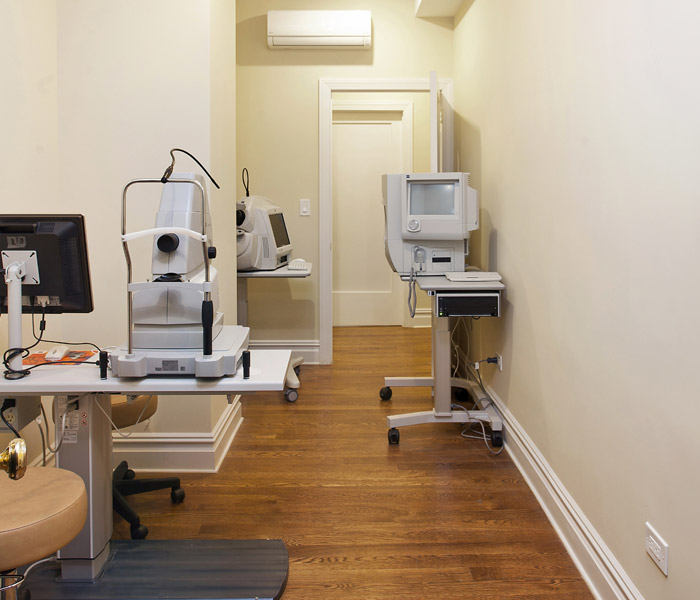Go-To Treatment for Common Retinal Diseases
This intense beam of laser light can be precisely focused to treat certain diseases of the retina with successful results. Preserve your current level of vision and prevent further loss of vision with this save and effective treatment at our 25 5th Ave, #1A office.
The retina is a light-sensitive layer at the back of the eye that covers most of its interior surface. It is here where the images that you see are formed.
The two most common types of retinal disease that are treated with lasers are:
- Retinal tears or holes
- Diabetic retinopathy (diabetic eye disease)

When the Treatment is the Best Preventative Care
Laser treatment seals the torn layers of the retina together. If not treated properly and on time, fluid leaks through these tears or holes resulting in the detachment or separation of these layers, which in turn can cause loss of vision depending on the degree of detachment.Reducing the Risk of Vision Loss due to Retinopathy (diabetic eye disease)?
Diabetes usually causes two types of damage to the retina:- With the first type of damage, leakage occurs from small blood vessels causing swelling which, if it occurs in the center of vision, can blur vision. Laser can be used in some individuals to stop this leakage.
- With the second type of damage, existing blood vessels are blocked and new blood vessels grow into the eye where they can bleed and break. Laser treatment is extremely effective to stop these blood vessels from growing, thus reducing the risk of vision loss.
Preparation for Laser Treatment
On the day of the procedure:
- Keep your usual eating habits (you can bring a snack to the procedure.)
- Take all medications as usual (including your eye drops.)
- Bring your medications and drops or a list of their names with you.
- An eye pressure test will be done prior to the laser treatment.
- Please have somebody to accompany you (the procedure lasts approximately two hours.)
- Register at the reception desk.
- You will be asked to sign a consent form.
- It is recommended to wear sunglasses on the day of the procedure (especially on a very sunny and bright day), since your eyes will be very sensitive to light when the pupils are dilated.
The Laser Treatment Procedure, Step-by-Step
- The medical specialist will make your pupils dilated to give a good view.
- You will be seated at a special microscope, while the laser beam is focused through the microscope into your eye.
- Some freezing drops (local anesthetic) will be placed in your eye for preventing discomfort from the special contact lens placed on your eye to hold your lids apart. This lens also magnifies the area being treated.
- It is recommended during the treatment to try to keep the teeth together and the head pushed forward against the band.
- You might see bright flashes of light during the procedure. Though laser treatment is almost always painless, in rare cases some patients experience slight discomfort.
What to Expect, Post-Laser Treatment
- Your vision will be blurred upon completion of treatment (the dilation drops also cause blurred vision. This will clear in a few hours.)
- You should continue using your usual medications and eye drops.
- Your doctor will instruct you about any activities that you should limit.
- Your next appointment will be scheduled.
- It is strongly recommended not to drive on the day of your laser treatment.
- Please report all severe pain and sudden loss of vision (very improbable that they will happen) to your doctor after the treatment.
Call us for thorough discussion of all aspects of Laser Treatment at (917) 639 – 3459.
